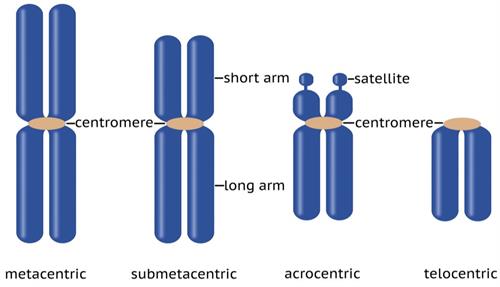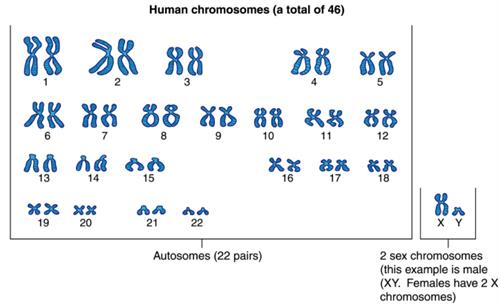PDF chapter test TRY NOW
Mitosis divides a eukaryotic cell into two daughter cells, each of which has the same number of chromosomes as the parent cell. The overall process of mitosis fails if the parent cell's chromosomes do not reach their correct destinations. The centromere is one structure that plays a key role in preventing this from happening.
The centromere's location aids in the classification of chromosomes into karyotype groups. This classification gives a consistent nomenclature for the mapping of chromosomal genes.
Based on the position of the centromere
Chromosomes are classified into four categories based on the position of the centromere.
- Telocentric
- Acrocentric
- Submetacentric
- Metacentric

Types of chromosomes based on the position of the centromere
1. Telocentric
In telocentric, the centromere is present at the proximal end of the chromosome. Telocentric chromosomes are rod-shaped.
2. Acrocentric
If the centromere is located at one end of the chromosome, it is acrocentric, with a short and long arm. Acrocentric chromosomes are also rod-shaped.
3. Submetacentric
In the submetacentric, the centromere is located near the chromosome's centre. As a result, two unequal arms are formed. The chromosomes are either J or L shaped.
4. Metacentric
In the metacentric, the centromere is located in the centre of the chromosome. It is divided into two equal arms. They are chromosomes with a V shape.
Based on function
There are two types of eukaryotic chromosomes.
- Autosomes
- Allosomes

Human chromosomes - Autosomes and allosomes
1. Autosomes
Genes in autosomes determine somatic (body) characteristics. The number of autosomes in males and females is the same.
2. Allosomes
Chromosomes called allosomes are responsible for determining an individual's sex. They are also called sexchromosomes or hetero-chromosomes. They are of two types viz., X and Y chromosomes.
A human male has one X and one Y chromosome, while a female has twoX chromosomes.
